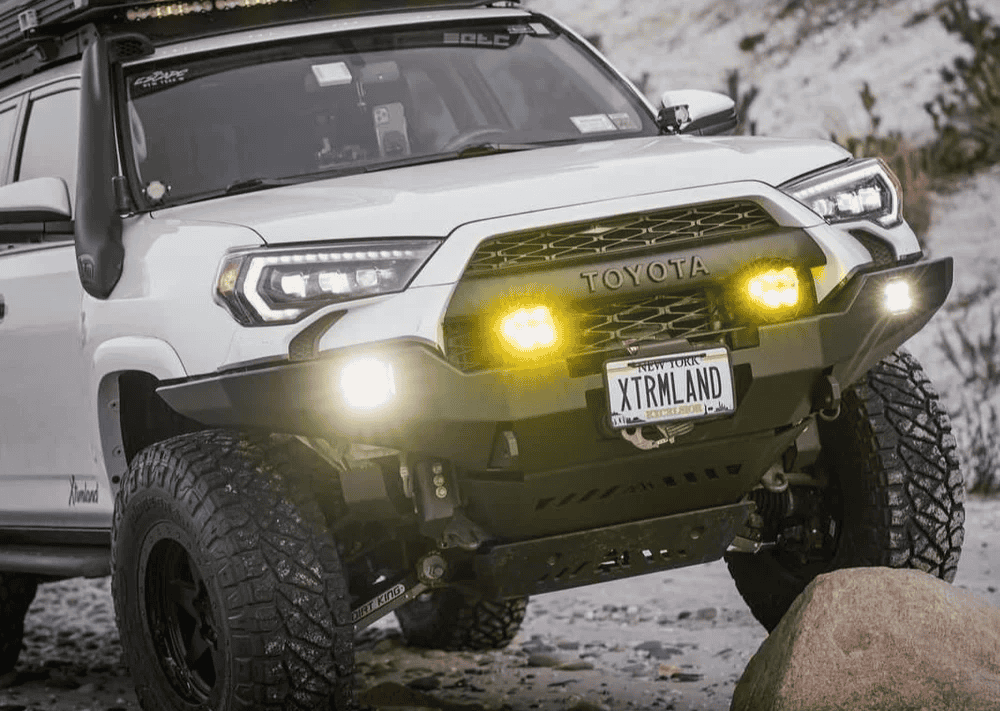Overland Vehicles

Remote racing strains equipment and people. A support vehicle must carry the right payload, cover long distances without drama, and arrive organized. Think of it as a rolling pit lane that can cross silt beds, rocks, or washboard roads without shaking itself apart.
Base platforms range from half ton and three quarter ton pickups to full size vans and medium duty chassis. Choice depends on payload, crew size, and terrain. High clearance, protected underbody, and appropriate tires matter more than raw horsepower. Aim for suspension that manages weight with control, not just height.
Range is a quiet superpower. Long legs reduce refueling detours and keep the crew near the race course. Balance factory tank upgrades with safe auxiliary storage, and confirm that added weight does not push you past gross vehicle weight limits.
Start with the race calendar and environment. Desert events demand dust mitigation, shade, and water. Forest courses favor lighting, wet weather gear, and chain saws for downed limbs. Draft a load plan for tools, parts, fluids, and personal gear, then trim the list to the essentials you will actually use under time pressure.
Spares should mirror the race vehicle’s failure patterns. Common hubs, belts, hoses, sensors, brake components, and fasteners save hours. Tires deserve a plan of their own. Match sizes and load ratings, label positions, and keep all tire service tools in one kit.
Communication holds the team together when terrain and distance stretch everyone thin. A layered approach works best. Reliable VHF or UHF for the pits and chase, a scanner for race control, and a satellite option for true backcountry. Antenna placement, grounding, and cable routing affect range as much as radio choice. Test before race day.
Navigation is more than a map. Build route plans with primary and alternate paths, mark fuel stops and water sources, and pre load waypoints for pit locations and road crossings. A dedicated GPS unit paired with offline mapping on tablets covers both overview and turn by turn needs. Add a simple tracker to the support vehicle so the team always knows where the pit is.
Tools, radios, lights, refrigeration, and computing strain a factory electrical system. A second battery with smart isolation, proper fusing, and a clean distribution panel dramatically increases reliability. Inverters should match peak tool loads with headroom. Solar and alternator based charging help maintain reserves during long idle periods. Keep wiring labeled and protected to make field diagnostics faster.
Fuel is both payload and hazard. Use rated containers or a secured transfer tank with proper venting and grounding. Carry fire extinguishers within reach on both sides of the vehicle, and establish a no smoking zone around the pit. Spill kits should be as easy to find as a socket set. A simple fueling checklist avoids contaminated jugs or mixed octane.
Spares ride best when they are contained, cushioned, and cataloged. Cases with foam or dividers stop parts from bruising themselves to death on rough roads. Label each bin by system so any crew member can grab what is needed without unpacking the world.
Recovery gear is insurance you will be happy to own. Pair a correctly rated winch with a synthetic line, soft shackles, and a quality tree strap. Add kinetic ropes, traction boards, a jack with a solid base, and ground anchors if trees are scarce. Practice recoveries before the race so everyone knows the plan and the hand signals.
Fast work is neat work. Shade structures, ground mats, and clean lighting improve speed and morale. Hydration and food are not luxuries. A well stocked cooler, a jet boil for quick meals, and a small handwash station keep the crew sharp. Medical kits should be staged for both minor injuries and serious incidents, with a clear protocol on when to escalate for help. At night, red task lighting protects night vision and reduces confusion.
If your program is stepping into remote racing, build the support vehicle like a mission tool. Start with a platform that suits your terrain. Add suspension and tires that handle the weight you truly carry. Map comms and navigation as a system, not a collection of gadgets. Wire power once, cleanly, with room to grow.
This is where a specialist shop saves time. Integrated storage that keeps spares quiet and accessible. Electrical systems that fire every time. Radios that just work. For proven chassis, layout, and outfitting ideas, explore our field ready builds at Explore overland rigs. If you need a tailored spec for fueling, recovery, and power management, our team walks you from planning to installation at Custom overland upfit. Curious about our approach, craftsmanship, and handoff experience in Fayetteville Arkansas, see Why choose OZK.
Bring your race calendar, crew size, and the terrain you face. We will translate them into a precise layout for storage, fueling, comms, power, lighting, and recovery, then test it with you before you head out. When the course gets quiet and the clock runs loud, a well built support vehicle is the edge you feel in every quick fix and clean departure.
Ready to turn a capable platform into a race proven support rig? Tell us how you run and where you race. Our team will map power, comms, storage, and recovery around your mission profile, then build it clean and reliable. Share your timeline and goals in the form and we will start your spec.
ADDRESS:
6159 E Huntsville Rd, Fayetteville, AR 72701
PHONE:
(479) 326-9200
EMAIL:
info@ozkvans.com